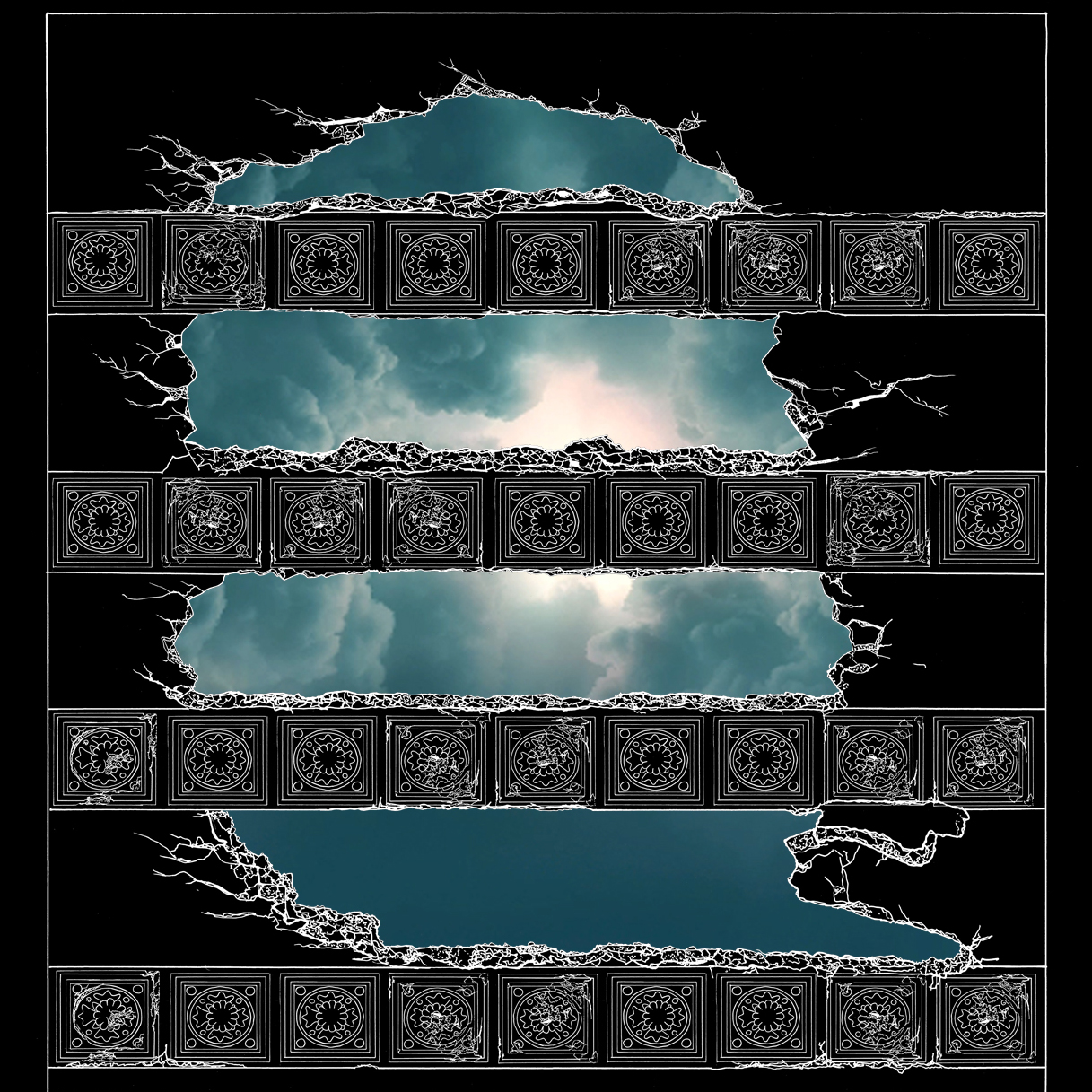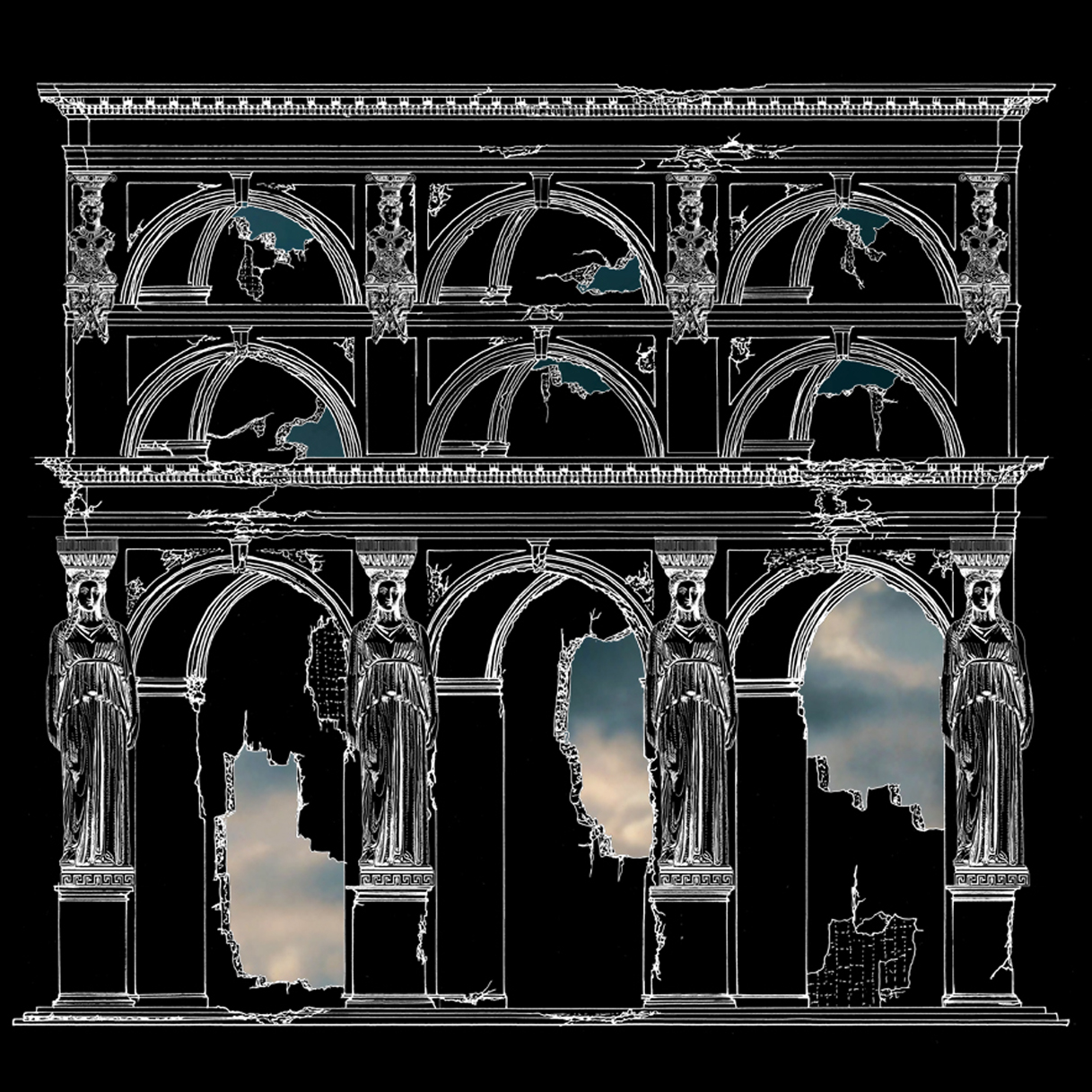Castor et Pollux – Warsaw Chamber Opera 2021
CASTOR ET POLLUX
Warsa Chamber Opera House
Libretto: Pierre-Joseph Bernard
Direction and choreography: Deda Cristina Colonna
Musical direction: Benjamin Bayl
Set, costumes, lights and multimedia: Francesco Vitali
Duration: 140 minutes, 1 break
Cast November 26 pre-premiere:
Castor: Hubert Walawski
Pollux: Simon Robinson
Télaïre: Judith van Vanroij
Phoebé: Marta Brzezińska
Jupiter: Piotr Pieron
Le Grand Prêtre de Jupiter: Wojciech Sztyk
Cléone/Une Ombre Heureuse/Une suivante d’Hébé: Joanna Radziszewska
Un Athlète/Mercure/Un Spartiate: Aleksander Kunach
Cast November 27 Premiere – November 28 – Polish National Television recording TVP Kultura:
Castor: Kieran White
Pollux: Kamil Zdebel
Télaire: Tosca Rousseau
Phebe: Anna Werecka
Jupiter: Dawid Biwo
Le Grand Pretre de Jupiter: Wojciech Sztyk
Cléone / Une Ombre Heureuse / Une suivante d’Hébé: Ingrida Gapova
Un Athlète / Mercure / Un Spartiate: Aleksander Rewiński
Cast November 30:
Castor: Kieran White
Pollux: Simon Robinson
Télaïre: Tosca Rousseau
Phoebé: Marta Brzezińska
Jupiter: Dawid Biwo
Le Grand Prêtre de Jupiter: Wojciech Sztyk
Cléone/Une Ombre Heureuse/Une suivante d’Hébé: Joanna Radziszewska
Un Athlète/Mercure/Un Spartiate: Aleksander Kunach
Dancers:
Adrian Navarro, Aleksandra Pawluczuk, Dominik Skorek, Joanna Lichorowicz-Greś, Sławomir Greś, Elisa Bermejo Gómez, Valerie Lauer, Alberto Arcos
Harpsichord:: Ewa Mrowca
Vocal ensemble of the Warsaw Chamber Opera – Head of the vocal group Krzysztof Kusiel-Moroz
The Early Instruments Orchestra dell’Opera da Camera di Varsavia
Musicae Antiquae Collegium Varsoviense
Video animation: Giardino Artlab22 Milano
Multimedia Mapping: Pro4Media Varsavia
Stage Manager: Natalia Mirowska
Production Manager: Robert Kęsik
Linguistic consultancy: Ewa Pilecka
Assistant director: Hannah Gellesz
Assistant to the coreography: Adrian Navarro
Assistant to music director: Dorota Cybulska-Amsler
Assistants set designer: Urszula Bartos-Gęsikowska, Alec Kevin James Boreham
Assistant costumes designer: Stefania Jabłońska-Łosyk
Watch Castor et Pollux on Polish media
TVP Kultura – INFORMACJE KULTURALNE – 26.11.2021
La storia di due fratelli mitologici, la prima di “Castor et Pollux”
TVP3 Varsavia – TELEWIZYJNY KURIER WARSZAWSKI – 26.11.2021
La tanto attesa prima dell’opera “Castor et Pollux”
TVP Info – TELEEXPRESS – 27.11.2021
Prima dello spettacolo “Castor and Pollux” di Jean-Phillip Rameau
TVP Info – WSTAJE DZIEŃ – 28.11.2021
Perla barocca francese: “Castor et Pollux”
TVP2 – PANORAMA – 30.11.2021
Castore e Polluce di Jean-Phillip Rameau
xxx
Wiesław Kowalski – teatrdlawszystkich.eu – 30.11.2021
Rameau meditativo nelle profondità dell’universo
Castor et Pollux by Jean Philipp Rameau, considered a master of French Baroque, at the Warsaw Chamber Opera took the form of an intelligent work, thanks to references to tarot, esotericism and astrology, which is also universal and which skillfully conducts a contemporary dialogue with the past. The scenography (Francesco Vitali) is minimalist, but thanks to the use of multimedia and the phenomenal use of light, it acquires clarity, deepening the interpretative tropes of the director (Deda Cristina Colonna). Simplicity prevails in the construction of scenic situations, from the variety of dances, ballet arrangements, arias and scenes with the participation of the choir, but thanks to the suggestive scenic movement (especially in the case of a choir it will be a very important gesture, composed with naturalness, delicacy and unpretentious emphasis) for all our senses and for the emotional need of the viewer that manifests itself during perception. The static nature of the action is conquered by an innovative attempt to look at the ancient heroes, which seeks to depart from purely baroque conventions and to give new life to form. Colonna and Vitali do not try to recreate the world presented in a fairytale key, dominated by myths and references to antiquity, but when they look for a metaphor they go towards the creation of their own, strong world marked by intimacy, in which each image will join the its nobility with baroque music and that which in its content is still important and eternally valid in its essence.
In terms of voice, the performance can be considered sung in a very elegant and noble way. Almost all artists are gifted with interesting voices and no doubt they are no strangers to the secrets of the old techniques. The most convincing was Kieran White in the role of Castor, his voice had the brilliance of French music, but also the lightness that is the basis of the execution of this type of repertoire. Only Kamil Zdebel was slightly behind him like Pollux; both singers, thanks to the resignation from a useless impression of exaltation, reach a high degree of scenic truth, sometimes even remoteness, which is not easy to achieve in this type of libretto. On their faces, any surprise, fear, happiness or emotion caused by the unexpected course of events was discreet, but not devoid of internal tension. Aleksander Rewiński was a little worse with the sounds in the upper register, but fortunately the parts he played (Un Spartiate, Un Athlete, Mercure) were not the most important in this performance. Among the ladies I liked Ingrida Gapova most (Cleone, Une Suivante d’Hebe, Une Ombre Heureuse), too majestic and dignified I found Telaire in the interpretation of Toska Rousseau, while Anna Werecka touched the tones of the envious, again intriguing Phebe.
The MACV Early Instruments Orchestra of the Warsaw Chamber Opera, led by the Australian conductor Benjamin Bayl, was characterized by the freshness in the articulation of a clear and lively musical line, which adequately reflects the temperature and the richness of the moods contained in the score of Rameau. The harmony of the sound combined with the vocal interpretations of the soloists is also impressive. Bayl has excellently moved from sequences of insane storms or sequences of great dramatic power, not just emotional, to heavenly moments that bring sweet relief or peace of love confessions, including brotherly ones.
An important role in the drama of this baroque composer, sometimes even dominant, is played by the ballet (Alberto Arcos, Elisa Bermejo Gomez, Sławomir Greś, Valerie Lauer, Joanna Lichorowicz-Greś, Adrian Navarro, Aleksandra Pawliczuk, Dominik Skorek), which it only creates, but also deepens the aura of uniqueness and mystery of what is happening between the main protagonists, not only in the emotional layer. Of course, the power of love, even between the title siblings, is hugely important, all the more so when Jupiter leaves heaven to try to soothe the aching hearts of ancient heroes. The beautiful choreography of which the director of this production is responsible reveals to the viewer the original aesthetics of the movement, which in the technique of Baroque dance uses very strongly the gestures of the hands that enter into dialogue with the movement of the feet and of the individuals. steps. The ensemble of dancers, composed in symmetrical lines and harmoniously creating a geometric figurality, shows in an impressive and extremely precise way all the variability of the rhythms, which have an enormous impact on the narrative flows of the story itself. For what is most important in our life and what constitutes interpersonal relationships. Because alongside love, war also appears in Pierre-Joseph Bernard’s libretto and makes itself felt.
The choir of the Warsaw Chamber Opera, perfectly prepared by Krzysztof Kusiel-Moroz, deserves special recognition and distinction. the antagonists to find themselves in a reality suspended between the cosmos and the earth, between what is assigned not only to the human being but also to the divine nature.
The sky and the stars rule this world and the souls of the protagonists, reaching their most secret recesses, the torn hearts and the inner contradictions of human reason, mysterious and full of contrasts.
TEATRALNY.PL – 17-12-2021
A small opera in the power of the cosmos Castor et Pollux, dir. Deda Cristina Colonna, Warsaw Chamber Opera
By Małgorzata Komorowska
This is not a joke. The Little Warsaw Chamber Opera reached for an operatic treasure of the late Baroque, in which the French Jean-Philippe Rameau literally reached for the stars. The people of the Age of Enlightenment looked at the sky at night and knew that planets named after the Greek gods swirled above their heads, and that among the stars shone the distinct constellation of Gemini. The action of the opera Rameau reflects elements of myths. Castor, the son of a man, the king of Sparta, dies in battle – Pollux, immortal, because the son of the god Zeus / Jupiter cannot come to terms with the passing of his beloved brother. The stage machinery favored the stage events. Jupiter descended from the ceiling on a golden ball (well, it had a base with grips supporting the device), i.e. the main effect of the Baroque theater: deus ex machina, was applied. In the finals, the title twin brothers entered, and the golden ball was then surrounded by silver circles, which are usually used to mark the trajectories of planets. At the climax, the floor rose and fell slightly. Only the trapdoor was missing … But it would be useful for a plot set in Hell, while Rameau carried it high above the sky.
Fantastic projections exaggerated the interior of the theater. They depicted bright clouds, then palace courtyards, a temple with flames on columns, a garden where fairy-tale birds and creeping smoke keep watch by slender pots. Finally, this interior showed something like a thermometer scale of 20 to 140 degrees; as you know, during the first expeditions of humans into space, it turned out that there is a temperature inexperienced by terrestrials. But with the last sounds the graph of numbers faded away and the walls of the auditorium and ceiling were seized by the starry sky.
These projections themselves created an interesting theater, and yet at the same time on a small stage, on the wings of the proscenium and in the aisles to the audience’s chairs, soloists, dancers and singers of the WOK Vocal Group were crowded – also forming a specific cosmos of movement, colors and constant changes. The original costumes, as the director admitted, taken from tarot cards, added colors. Naked torsos in men, and shoulders and back in women, fancy headgear, metal lace ornaments, high-waisted robes – this transported slender operatic characters to a different, extraterrestrial world. Their otherness was further enhanced by a strongly stylized movement: an arch surrounded the head with a hand, and strange figures were drawn not even by the hands, but by the fingers themselves. The sophisticated aesthetics was broken only by the twenty-person group of singers in voluminous robes – red, yellow, blue and green – wandering around the sidelines. Fortunately, their voices in the choral sequences sounded brilliant.
French opera is characterized by a multitude of ballet scenes and for them Rameau in Castor and Pollux composed music that was fascinating to listen to, rhythmically delicate and inventive in colors – this is what he was famous for. The dancers silently and nimbly placed their feet on the floor, turned the bodies, joined and separated like in a kaleidoscope. There were eight of them, judging by their names, from all over the world. In these ballet scenes, the famous WOK group of early instruments – Musicae Antique Collegium Varsoviense – presented the best from the orchestral moat, which this time in the entire performance did not play as well as it can. The two flutes, often entangled, wobble a little in their articulation, and the excessively sharp chords of the harpsichord in terms of singers resembled the beats of the drums.
In French opera, there is no point in waiting for spectacular arias. Here the word is respected, vocalized dialogues and recitatives dominate. However, on two occasions, Rameau gave way to purely operatic emotions. Jealousy and war were destroying Castor’s life, so when he died, the growing tension in the music suddenly died and Telaire, Castor’s fiancée, Tosca Rousseau, with a storm of black hair and a whitened face, began mourning – how beautiful… Later, the relentless Pollux made Father Jupiter bring his brother back to life and their meeting resulted in a delightful duo, in which the lead was the sonorous, almost magic-colored and softly guided by Castor, the tenor Keran White. Three spectacular vocal entrances, even with rare melisms here, were given to the tenor Aleksander Kunach, as always perfect as always, in incarnations of Spartan, Athlete and Mercury in diverse costumes. They also changed their costumes for the more and more unusual schemer Hebe and her confidante, but their sopranos kept their sonic charm invariably.
The show was produced by the same team that four years earlier gave this scene a very good (transferred to TVP Kultura) Armida Lully (see my text From Jerusalem to Aleja Solidarności), that is: Benjamin Bayl (musical direction), Deda Cristina Colonna (direction and choreography) and Francesco Vitali (set design, costumes, multimedia, lighting). They were able to make a performance with captivating energy and sometimes exaggerated sound power in singing and playing watch without a moment of weariness. The opera Cstor et Pollux by Rameau tells about love and threats, and such feelings are experienced by people, including theater audiences, in all centuries. But an opera about space and immortality is indeed a unique subject. How we care today!
lifestyle.newseria.pl – 02/12/2021
Opera da Camera di Varsavia dopo la prima di “Castor et Pollux”. I lavori sullo spettacolo sono iniziati anche prima della pandemia
Warsaw Chamber Opera after the premiere of “Castor et Pollux”. Work on the show began even before the pandemic
The premiere of Jean-Philippe Rameau’s “Castor et Pollux” was long overdue. It was originally supposed to take place in March 2020. However, the Warsaw Chamber Opera’s plans were thwarted by the coronavirus pandemic. Now we have managed to prepare a show in an international group, despite the difficulties of the pandemic. – The show delights with the beauty of Baroque voices and dances, and everything has been done with great care and attention to detail. Today it is really difficult to find such an opera – says Alicja Węgorzewska, opera singer and director of the Warsaw Chamber Opera.
– The idea for the opera “Castor et Pollux” was born thanks to the excellent relations between me and the direction of the Warsaw Chamber Opera, which we established while we were working on “Armide”. We were looking for another project to do together and, after Lully, the obvious choice seemed to be Rameau, who wonderfully combines singing, stage technique and dance. However, it was a long time before we finally decided to choose this masterpiece – recalls Deda Cristina Colonna, director and choreographer.
– We considered 10 titles – adds Alicja Węgorzewska. – We wanted to go back to the French Baroque and show Rameau’s music, because it is not played often. And the story of Castor and Pollux, two brothers who have to fight with love and for the love of women and each other, is perhaps a timeless theme. And for this we could use the fourteenth-century design of the Italian tarot, on which Francesco Vitali, set designer and costume designer, based his concept. The scenography is surprising especially in the final scene, I don’t reveal the details, because everything is seen in the television production.
As Francesco Vitali announces, spectators will be surprised on several levels. The atmosphere at the beginning of the show changes and everything “opens up” until the end.
– I don’t want to give too much away, so as not to spoil the audience’s surprise, but we are trying to transform the Warsaw Chamber Opera into a planetarium. The audience is inside the set, in the middle of the events, to be more involved in what is happening on stage – she explains. – We use multimedia effects. The scenography has two faces: a typical Baroque technical stage, with wings raised and lowered manually, and a multimedia stage made up of various types of video projections, throughout the room, even on the ceiling and walls. Thanks to this, the audience sitting in the hall can feel part of the stage.
As the set designer points out, the timeless message “Castor et Pollux” says that self-realization, that is, man reaching the stars, is possible only when our divine figure helps this mortal and together they create a mature human being. The scenic coexistence of song, music and dance is a universal message that makes viewers aware that a combination of many different languages is needed to create any important human work.
Kamil Zdebel, the opera singer who played Pollux, also talks about the uniqueness of “Castor et Pollux”. According to him, working on an opera was not typical of an opera house, because it is a show that has many elements of dance choreography, which as if it shows the words being sung. Therefore, many movements had to be ‘superimposed’ on the lyrics. You have to be very careful that everything is in sync with the conductor and is in line with the movement on stage.
– Playing the role of Pollux, I had to refer to my experiences, because a lot of things on stage come from life – adds Kamil Zdebel. Opera singer Dawid Biwo has a similar opinion.
– French opera is a very difficult subject, especially for foreigners, that is, non-French. This is a specific type of sentence formation, which creates tension in the whole work, so it’s not an easy job, but a very rewarding one, ‘he points out.
Benjamin Bayl is the conductor and musical director of the production of the opera “Castor et Pollux”.
– Rameau is a unique composer of the French Baroque period who combined song and dance in a very special way. It can be said that the proportions between music, dance and song are almost equal. I think this is a very special combination, especially for the viewers. Rameau was also a great innovator with an extraordinary imagination. He has composed a lot of excellent dance music, also for his own work. This is something very special, notes Benjamin Bayl.
– I know this performance will be a success, because it was created with a huge amount of work of the whole team, not only conceptually, but also during rehearsal, execution, realization, bringing to a successful conclusion a great set design challenges with such a small stage, which in fact has no supporting structures – sums up Alicja Węgorzewska
Download Interview with Francesco Vitali, by Dr. Jacek Kornak
London August 2021
The origins of the poster - Francesco Vitali & Alec Kevin James Boreham
Details of the drawn scene that become poster
Bozzetti
Esempi disegni esecutivi mapping - Francesco Vitali - Alec Kevin James Boreham
Televisione Nazionale Polacca TVP Kultura - registrazione televisiva Opera da Camera di Varsavia 28 Novembre 2021










































